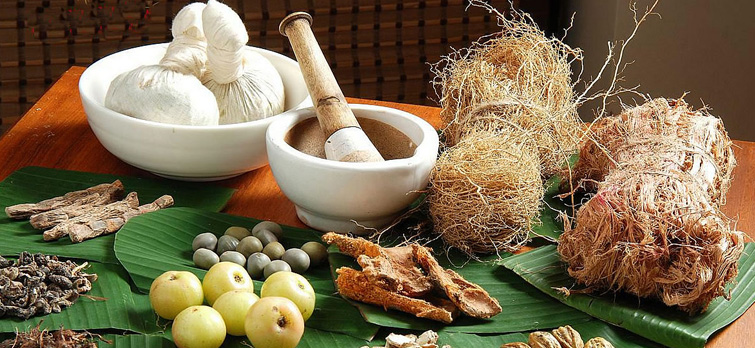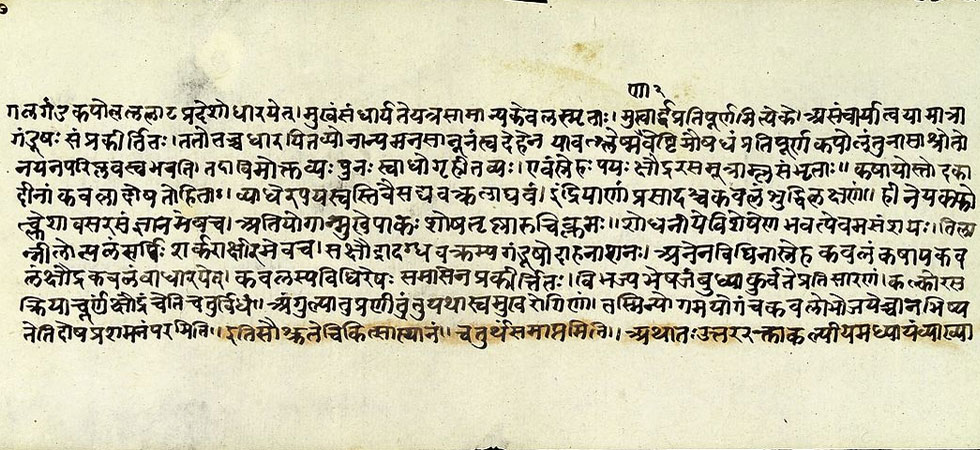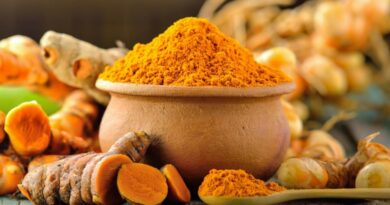Ayurveda means holistically living life
Ancient India has given many treasures to the world, and Ayurveda is one. The system of medicines that are considered to be Indian in origin or the systems of medicine, which have come to India from outside and got assimilated into Indian culture are known as Indian Systems of Medicine (Prasad, 2002). In this category, India has six recognized systems of medicine, known as Traditional Systems of Medicine (TSM). They are – Ayurveda, Siddha, Unani, Yoga, Naturopathy, and Homoeopathy. Amongst this Ayurveda is considered one of the oldest traditional systems accepted worldwide. Ayurveda means holistically living Life.
Ayurveda has roots in India

Ayurveda originated and developed in India around 5,000 years ago under the ancient Vedic culture. Ayurveda, the word has derived by combining two Sanskrit words, ‘Ayur’, life, and ‘Veda’ science. It heals the body by relying upon herbs as medicines for maintaining good health. Unfortunately, this ancient wisdom was suppressed during the years of foreign occupation, but despite that, it’s widely accepted and practiced throughout the world. Most of the traditional systems of Medicine in India including Ayurveda have their roots in folk medicine.
But an age-old well-defined consistently running conceptual framework distinguishes Ayurveda from other systems in traditional medicine. Its advocacy towards the integration of health and disease is another important aspect that makes it far ahead of its time. Another important feature is that it works on a philosophical framework that determines the therapeutic practices with good effects, under the Vedic Philosophy.
According to this philosophy, human beings are part of nature, where animals and plants are interdependent, and has an inherent relationship between the universe and human beings. But unlike the animal kingdom, humans live in a more complex world where they are constantly exposed to environmental changes like the weather, diet, work, society, economy, and lifestyle. It is believed that these forces may negatively influence people’s state of mind, body, and soul.
History of Ayurveda: Vedic age
The foundation of Ayurveda is a century old and laid by the ancient schools of Hindu Philosophical teachings named “Vaisheshika” and the school of logical thoughts named “Nyaya”. It is further related to the manifestation framework, known as “Samkhya”, and it was established in the same period when schools of Nyaya and Vaisheshika flourished. Vaisheshika preached about inferences and perceptions that should be obtained about a patient’s pathological condition for treatment.
Whereas, Nyaya propagated its teachings on the basis that one should have extensive knowledge of the patient’s condition, and the disease condition before proceeding with treatment. In Vaisheshika, the attributes of any objects are classified into six types: Dravya (substance), Vishesha (particularity), Karma (activity), Samanya (generality), Samavaya (inherence), and Guna (quality), all scripted in Sanskrit. Later, Vaisheshika and Nyaya schools worked together and jointly founded the nyāya–vaiśeṣika school of thought. The nyāya–vaiśeṣika school, later brought glory to the ancient knowledge and helped in disseminating the knowledge about Ayurveda.
However, Ayurveda originated far before these schools of thought and is considered to be divine, from the Hindu God of medicine, ‘Dhanvantri’ an avatar of the Hindu God ‘Lord Brahma’, who created the universe. He passed on this holistic knowledge of healing to the sages for the well-being of mankind. Subsequently, sages passed on to their disciples and then to the common man through various writings and oral narrations. These are originally composed in the form of poems, called Shlokas. Sages based on these shlokas were used to describe the importance of herbs and medicinal plants in human life. These shlokas are well-documented in four eminent compilations of Vedas (knowledge) called Rig Veda, Yajur Veda, Sam Veda, and Atharva Veda.

The Rig Veda is the most well-known of all the four Vedas and describes 67 plants and 1028 Shlokas. The Atharva Veda and Yajur Veda describe 293 and 81 medicinally useful plants. The practice of Ayurveda is based upon the knowledge gained from these Vedas.
The writings in Rig Veda and Atharva Veda are attributed to “Atreya” who is believed to have been conferred with this knowledge from Lord Indra, who initially received it from Lord Brahma. Agnivesha compiled the knowledge from the Vedas, and it was edited by Charaka and some other scholars and is presently called “Charaka Samhita”.
Charaka Samhita describes all aspects of Ayurvedic medicine and Sushruta Samhita describes the Science of Surgery. Both these legendary compilations are still used by practitioners of traditional medicine. These ancient texts are available in various translations and languages of Tibetan, Greek, Chinese, Arabic, and Persian. There are several other allied minor compilations like Nighantu Granthas, Madhava Nidana, and Bhava Prakasha from the contributions of various scholars, however, Charaka Samhita is the most respected of all the records.
This shows the base of Ayurveda is very holistic, and divine and originated in India. Over the period, Ayurveda has become the science of life, encompassing mind, body, and soul.
Key concepts of Ayurvedic medicine
The microcosm–macrocosm analogy refers to a historical view that posited a structural similarity between the human being and the cosmos as a whole. In simpler terms, whatever is present in the Universe (macrocosm) should be present in the body (the microcosm). As conceptualized, the universe is composed of five basic elements named Prithvi (Earth), Jala (Water), Teja (Fire), Vayu (Air), and Akash (Space/Ether). Ayurvedic science believes that the human body is derived from these basic elements and joins together to form Trodoshas (‘humor’, as mentioned in the ancient Greek System) –
- Vata, or air and ether, which give us movement and activity;
- Pitta, or fire and water, responsible for heat, appetite, and digestion; and
- Kapha, or earth and water, is responsible for water and bodily fluids.
These Trodoshas govern and control the basic psycho-biological functions in the body. In addition to these Trodoshas, there exist seven basic tissues, known as saptha dhatus (Seven Materialistic Elements) – Rasa (body fluids), Rakta (blood), Mamsa (muscular tissue), Meda (adipose tissue), Asthi (bony tissue), Majja (bone marrow and nervous tissue) and Shukra (generative tissue – including semen and ovum constituents), and three waste products of the body – Mala, i.e., feces, urine, and sweat. Once all these Trodoshas (Vata, Pitta, and Kapha) are in perfect balance, the individual enjoys good health; any imbalance causes disease. Ayurveda tries to rectify imbalances through holistic healing.
It’s understood that the growth and development of the body components depend on the nutrition provided in the form of food. The food is conceptualized to be composed of the basic five elements mentioned above (Prithvi (Earth), Jala (Water), Teja (Fire), Vayu (Air), and Akash (Space/Ether)). Hence it is considered to be the basic source material to replenish or nourish the different components of the body after the action of Agni (bio-fire). The tissues of the body are considered the structural entities and the humor are considered physiological entities, derived from different combinations and permutations of the five basic elements.
Under these concepts, Ayurvedic physicians prescribe individualized treatments that include herbs, diet, and exercise along with lifestyle recommendations. Due to its serenity Indian populations still have a strong belief in Ayurveda and some way around they prefer in using Ayurvedic medicine, combined with conventional Western medicine. However, this is a popular practice all over Southeast Asia as well.
Manifestation of creation
Herbs are the heart of Ayurvedic medicine. In scriptures, over 15,000 herbs have its mentioning, but only around 900 are commonly used in Ayurvedic medicines. These herbs are collected from natural sources like flowers, roots, stems, and leaves of trees and processed into various forms to release their optimum potential. Neem is one of the most common herbs used to keep all diseases at bay and attain the body’s natural defense mechanisms. Ginger, turmeric, amla, and ashwagandha, among others, which has the utmost importance in the traditional system of medicine. Recently, scientists at the University of Natural Resources and Life Sciences (BOKU) in Viena, Austria discovered that Curcumin, a compound derived from the turmeric plant, commonly used in Indian curries, stops the growth of cells, eventually killing cancer cells.

Ayurvedic literature and awareness
Ayurveda is also regarded as the science of longevity and teaches people how to be healthy, wealthy, and wise under any circumstances. It is considered that the three ancient books, namely “Charaka Samhita,” “Sushruta Samhita”, and “Astanga Hridaya”, written in Sanskrit dated more than 2,000 years ago, are the main texts on Ayurvedic medicine. These books combinedly are known as the “Great Trilogy”.
There are shreds of evidence that show Ayurveda has paved the way for various branches of medicine. “Sushruta Samhita” mentions nine branches in Ayurvedic general medicine i.e., Surgery, Ear, Nose & Throat diseases, Toxicology, Psychiatry, Paediatrics, Gynaecology, Sexology, and Virility. These texts reveal ancient natural healers who delved into plastic surgery. The Sushruta Samhita documented the etiology of more than 1,100 diseases, the use of hundreds of medicinal plants, and instructions for performing scores of surgical procedures, including three types of skin grafting and reconstruction of the nose. Sushruta is considered the “Father of Surgery”.
Even America’s Columbia university has given credit for Plastic Surgery to ancient Indian physician Sushruta.
Ayurveda vs. Allopathy
Allopathy is considered a Western medicine system. In allopathy, the focus is on symptomatology and disease, and primarily it uses drugs and surgery to rid the body of pathogens or diseased tissue. It’s agreeable that many lives are saved by this approach. But the toxicity of any drugs, used in allopathy weakens the body. However, Ayurveda doesn’t focus on disease. Rather, on the cause of disease. Ayurveda tries to remove imbalance from life, i.e., balancing the energy level. When the flow of energy within a person is balanced, the body’s natural defense system will become strong to defend against any diseases.
But Ayurveda is never meant to be considered a substitute for Western allopathic medicine. In acute conditions, drugs and surgery might be the most optimal methods of treating any disease. Subsequently, if you follow Ayurvedic practices, it will help you to rebuild the body after undergoing drugs or surgery, or even better, and will make you stronger, and ultimately less prone to getting a disease in the first place. For better understanding, if you are feeling discomfort, but the doctor is still not able to identify the reason behind this, eventually, it must be construed that you have developed an imbalance in your Trodoshas that has not yet manifested as a disease. Being able to recognize that and take action through Ayurveda to treat such imbalances can do wonders in preventing the disease from taking place in the body. Hence Ayurvedic medicine can wonderfully act as Preventive Medicine for you.
Globalization of Ayurveda
The ayurvedic practice has started gaining momentum in the world. Food supplements in the form of Ayurvedic drugs are now available and used in the USA, European Union, Japan, and many countries. Facilities for imparting short and long-term training and treatment in Ayurveda are now available in many countries like the USA, Argentina, Australia, Brazil, New Zealand, South Africa, Czech Republic, Greece, Italy, Hungary, Netherlands, Russia, UK, Israel, Japan, Nepal, and Sri Lanka (Kurup, 2004).
The reason for its acceptance by the world is its simplicity and ability to maintain parity with mother nature, hence no side-effect. Further considering the cultural milieu and constitutional profile of the population, the concepts of proper lifestyles, dietary habits, and daily and seasonal routines may be formulated under the principles of Ayurveda for any country for their adoption in day-to-day life. Also, integration of the non-drug therapeutic procedures such as ‘Panchakarma’, ‘Ksarasutra’ etc into other health systems certainly can broaden the choices available to physicians and patients.
The Indian government recently established the Central Council for Research in Ayurvedic Sciences, an autonomous body of the Department of Ayurveda, Yoga and Naturopathy, Unani, Siddha, and Homeopathy, for the undertaking, coordinating, formulating, developing, and promoting research on scientific lines in Ayurveda.
That’s why adaption to Ayurveda means holistically living Life.
Photo Credit: mint





Pingback: History of Indian Spices: Cause of invasion | inFoodTRAVEL
Thank you for your sharing. I am worried that I lack creative ideas. It is your article that makes me full of hope. Thank you. But, I have a question, can you help me?